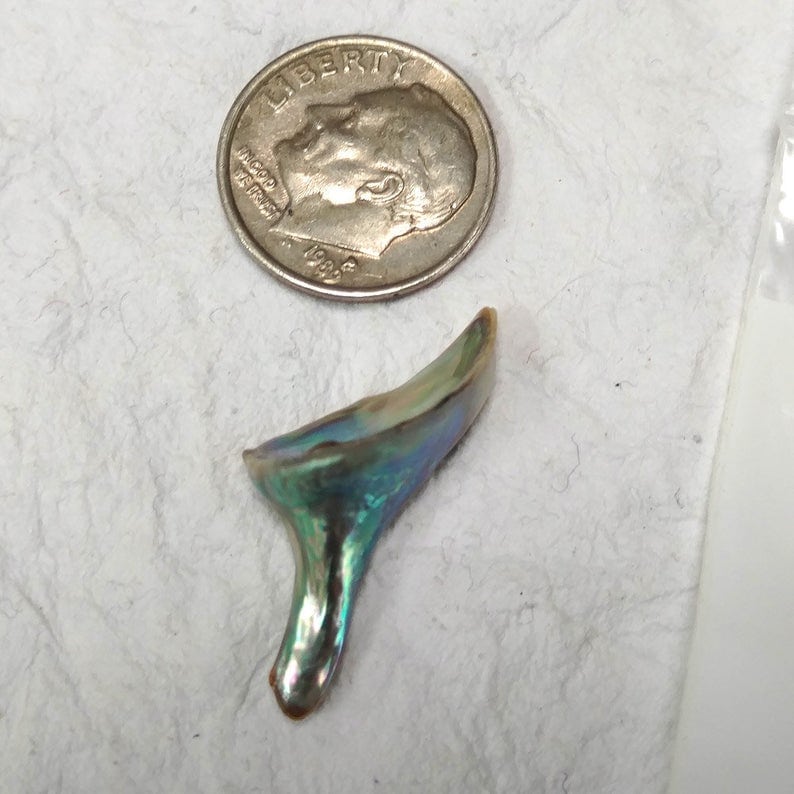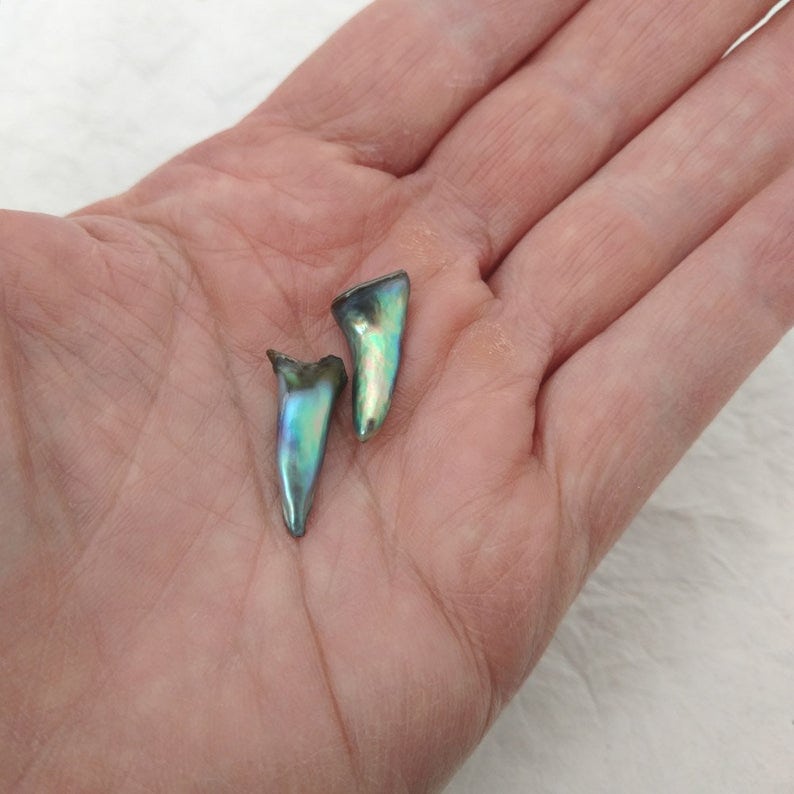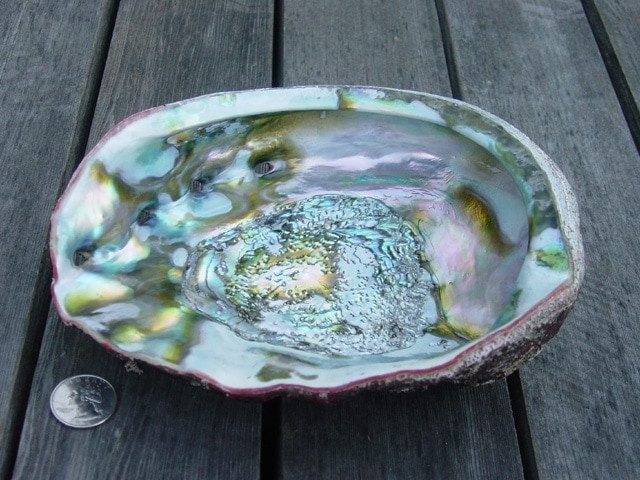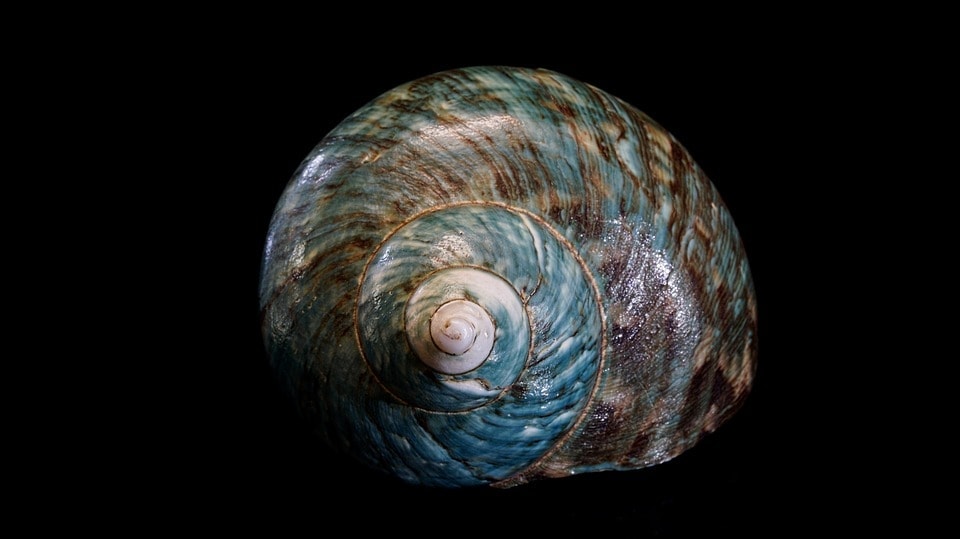Most people think that only oysters yield pearls but there’s a wide variety of molluscs that create pearls, some of which are extremely rare.
Among the rarest pearl varieties in the world, abalone pearls grow in nature, without human intervention. They’re known for their amazing colors and intriguing iridescence which is like no other pearl on the market.
Because of their rarity, it’s difficult to find abalone pearl jewelry, but for those lucky enough to own them, these pearls are unique, individual and mesmerising.
Here’s a quick guide into the abalone pearl.
What is Abalone?
Abalone, also called Paua, is a variety of marine snail, also called a marine gastropod mollusc. It’s famous for its amazing iridescent colors, which appear once the shell has been cleaned and polished. From all the molluscs that produce pearls (oyster, mussel, conch etc…) abalone is the most colorful and intriguing.
Abalone shell is commonly used in jewelry, much like mother of pearl, as it’s easily available, affordable and brings a natural, unique mix of colors to a jewelry design. However, abalone pearls are much rarer, as these creatures don’t typically produce pearls.
How Are Abalone Pearls Formed?
Much like traditional pearls, abalone pearls form when an irritant gets into the shell and is viewed as a threat by the creature. This then activates its defence mechanism, as it layers the irritant with layer upon layer of colorful nacre, which over time forms into a pearl.


Most abalone pearls are found by hobbyists as the demand for these in jewelry isn’t high. Because of their scarcity and irregularity, abalone pearls don’t have the same value as traditional pearls. they’re not a mainstream gemstone and jewelers don’t rely on them as a consistent material for jewelry-making.
Although they aren’t in huge demand, high-quality abalone pearls can cost upwards of $1000. In certain parts of the world, like New Zealand and Australia, abalone pearls are known and sought after.
Abalone Pearl Characteristics
The most unique characteristic of abalone pearls is their range of vibrant colors. These swirl on the surface of the pearls in vivid greens, blues, purples, cream, pinks and even yellows. A mix of metallic blue green is the most dominant color, much like the abalone shell.
Another factor that differentiates abalone pearls from traditional pearls like Akoya, Tahitian or South Sea, is their unique shapes. These mostly grow in irregular, elongated shapes with most looking like sharks’ teeth or dugout canoes. Perfectly round abalone pearls are almost non-existent. This is why abalone pearls aren’t judged on their shape.
Because of how irregular these pearls tend to be, they can be difficult to set in jewelry. They require unique, creative designs that can accentuate the shape of the pearl and work with it. Drop earrings, elongated pendants, unique shaped rings and brooches are some jewelry ideas for these pearls. They’re also good for use in ornamental objects. In the hands of an expert jeweler, abalone pearl jewelry can be truly stunning.
In terms of size, abalone pearls can grow up to great sizes, sometimes measuring more than 5cm or more in length and about 2 cm in width. They can come in very large carat sizes, with some measuring well over 50 carats.
Abalone pearls are also very fragile, and easily damaged. They’re not very hard, which means that exposure can cause fractures, chips, erosion and abrasion. Oftentimes, abalone pearls feature cracks that appear along the length of the pearl. This makes it unsuitable for regular wear and difficult to set in jewelry.
The Trouble with Culturing Abalone Pearls
Unlike most other molluscs, abalone are haemophiliac, meaning that they don’t have a ‘clotting agent’ in their blood. This makes it very difficult to farm the abalone for pearls, as any injury to the animal will likely result in it bleeding to death.
Because of the delicate nature of the animal, and its inability to withstand invasive surgical procedures, a standard of pearl farming practices, abalone pearls haven’t been successfully cultured. They are farmed for food but not for their pearls.
Abalone Pearl vs. Abalone Shell
Abalone pearl shouldn’t be confused with the abalone shell, which is a popular material for use in jewelry.
Abalone shell has been used in jewelry for centuries and is especially popular in New Zealand, where unique species of abalone are found in abundance. Unlike abalone pearls, the shell is easily available and much more affordable.

Abalone shell can be used in the same ways that mother of pearl (nacre) is used – cut into beautiful shapes for use in all types of jewelry, in inlays, mosaics and carvings.
Abalone shell exhibits stunning iridescent colors and is the most colorful, vibrant and vivid of all natural pearl related jewelry.
Is My Abalone Pearl Real?
Not every stone sold as an abalone pearl is a real pearl. When you go shopping for abalone pearls, either online or in person, note that some stones sold as abalone pearls have most likely been cut from irregular bumps or growths that form on the shell.
These should be termed abalone shell, rather than abalone pearl, but they can be hard to tell apart and it’s in the interests of the seller not to disclose that information.
This is why it’s important to purchase from a trusted seller with proven track record, good reviews and returns policy.
The Sustainable and Legal Issues of Abalone Harvesting
Abalone was once abundantly found, but due to overexploitation, disease and changing environmental conditions, the numbers of this marine gastropod have diminished drastically.
PBS reports that the white abalone, found in California and prized for its soft meat, was the first marine invertebrate to be given federal protection after its numbers had dropped by almost 99 percent.
Overexploitation has put the abalone on the endangered list of marine animals.
The creature has been hunted for centuries for its meat, which in countries like China, is considered a luxurious delicacy and costs exorbitant prices. The increasing acidification of the oceans have also contributed to the dwindling numbers of abalone, as they find it difficult to adapt to these changes.
Because of these issues, hunting for abalone is now considered illegal in many countries and where it’s still legal, heavy restrictions have been placed. Today most abalone for consumption come from farmed sources.
Where to Find Abalone Pearls
If you’re lucky, you’ll come across a rare abalone pearl or two on specialist pearl sites. These occasions are few and far between, as abalone pearl supply isn’t consistent.
If you search on sites like Etsy and Amazon, you have a better chance of finding abalone pearls. Always ask questions from the seller if in any doubt, and check their after sales policies.



Add Comment